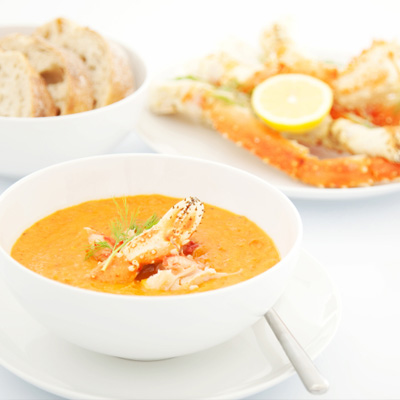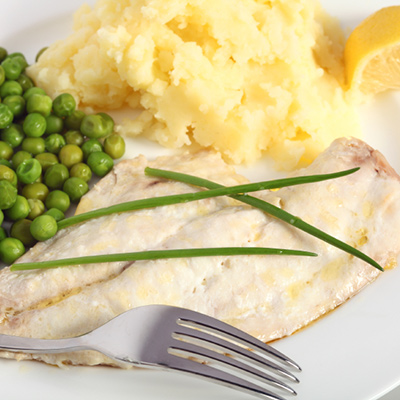Choosing the Right Species

To help our consumers make informed choices, Metro provides information regarding each seafood products’ species, fishing region, and fishing method.
Fresh products
Fish product labels
White fish is a healthy choice and perfect if you want to reduce your intake of calories and lipids. To make your fish extra tender, cook it en papillote, in a broth, or with crushed tomatoes.
The scientific name
Common names normally used, such as "tuna" can encompass a number of different species, some of which are being overfished (e.g. Bluefin tuna, Thon rouge, Thunnus thynnus) while others are not (e.g. Albacore tuna, Thon germon, Thunnus alalunga). Similar to buying plants or seeds for the garden, the scientific name is a means of confirming that we're talking about the right species.
Fishing area
For some species, stocks may be healthy in a given fishing area but overfished in others. This is the case, for example, with Atlantic cod (Gadus morhua), which is currently overfished in Canada, but not in Iceland.
Fishing Method
For a given species in a given region, some fishing techniques may be less ecologically harmful than others (e.g. selective nets that reduce bycatch, or avoid disrupting seabed habitat). These techniques must be promoted.
Species
Certain species of fish and seafood are worth discovering, not only for their taste and their nutritional value, but also because they come from good fishing or farming practices.

Here are some species that meet our sustainability criteria:
Lobster (Homarus americanus)
Fishing area: Northwest Atlantic, Quebec and the Maritime provinces
Fishing method: Traps
More info:
- Conservation measures increase sustainability.
- Fishing gear designed to limit he amount of bycatches.
- Source of revenue for coastal communities in Quebec and Maritime provinces.
Additional information
Lobster Recipes to Try
Blue mussel (Mytilus edulis)
Fishing area: Northwest Atlantic, Quebec and Prince Edward Island
Type of fishing: Farmed
Description
- The blue mussel feeds itself by filtering the nutrients that surround it. It does not require any additional food.
- It is an aquaculture product and is available all year round.
- Source of revenue for coastal communities in Quebec and Prince Edward Island.
Additional information
Mussel Recipes to Try
Northern shrimp (or deep water shrimp, cold water shrimp Pandalus borealis)
Fishing area: Gulf of St-Lawrence, Quebec and the Maritime provinces
Type of fishing: Wild, trawl
Description
- The resource is managed in a sustainable way thanks to several conservation measures.
- Fishing gear designed to limit the amount of bycatches.
- Source of revenue for coastal communities in Quebec and Maritime provinces.
Additional information
Shrimp Recipes to Try
Snow crab (Chionoecetes opilio)
Fishing area: Gulf of St-Lawrence, Quebec
Type of fishing: Trap
Description
- The resource is managed sustainably.
- Source of revenue for coastal communities in Quebec.
- Fishing gear designed to limit the amount of bycatches.
Additional information
Crab Recipes to Try
Striped bass (X Morone chrysops)
Fishing area: North America, United States
Type of fishing: Farmed
Description
- Few resources required for its farming.
- The aquaculture that it comes from provides for fresh and quality products year round.
- Proximity.
Striped Bass Recipes to Try
Arctic char (Salvelinus alpinus)
Fishing area: North America, Quebec
Type of fishing: Farmed
Description
- Few resources required for its farming.
- The aquaculture that it comes from provides for fresh and quality products year round.
- Source of revenue for Quebec communities.
Additional information
Arctic Char Recipes to Try
Rainbow trout (Oncorhynchus mykiss)
Fishing area: North America, Quebec and Ontario
Type of fishing: Farmed
Description
- Few resources required for its farming.
- The aquaculture that it comes from provides for fresh and quality products year round.
- Source of revenue for Quebec and Ontario communities.
Additional information
Rainbow Trout Recipes to Try
American oyster (Crassostrea virginica)
Fishing area: Northwest Atlantic, Maritime provinces and the United States
Type of fishing: Wild and aquaculture, tongs
Description
- Source of revenue for communities in Prince Edward Island and New Brunswick.
- Many species, including oysters, feed themselves by filtering water for food particles. They do not require any additional feed in an aquaculture setting making them a sustainable choice!
- The aquaculture that it comes from provides for fresh and quality products year round.
- The fishery is highly regulated and has limited environmental impact.
Additional information






























